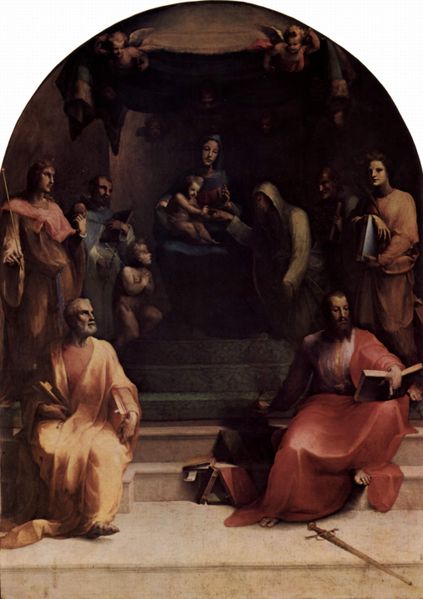Domenico di Pace Beccafumi (1486-1551)
Get a Domenico di Pace Beccafumi (1486-1551) Certificate of Authenticity for your painting (COA) for your Domenico di Pace Beccafumi (1486-1551) drawing.
For all your Domenico di Pace Beccafumi (1486-1551) artworks you need a Certificate of Authenticity (COA) in order to sell, to insure or to donate for a tax deduction.
Getting a Domenico di Pace Beccafumi (1486-1551) Certificate of Authenticity (COA) is easy. Just send us photos and dimensions and tell us what you know about the origin or history of your Domenico di Pace Beccafumi (1486-1551) painting or drawing.
If you want to sell your Domenico di Pace Beccafumi (1486-1551) painting or drawing use our selling services. We offer Domenico di Pace Beccafumi (1486-1551) selling help, selling advice, private treaty sales and full brokerage.
We have been authenticating Domenico di Pace Beccafumi (1486-1551) and issuing certificates of authenticity since 2002. We are recognized Domenico di Pace Beccafumi (1486-1551) experts and Domenico di Pace Beccafumi (1486-1551) certified appraisers. We issue COAs and appraisals for all Domenico di Pace Beccafumi (1486-1551) artworks.
Our Domenico di Pace Beccafumi (1486-1551) paintings and drawings authentications are accepted and respected worldwide.
Each COA is backed by in-depth research and analysis authentication reports.
The Domenico di Pace Beccafumi (1486-1551) certificates of authenticity we issue are based on solid, reliable and fully referenced art investigations, authentication research, analytical work and forensic studies.
We are available to examine your Domenico di Pace Beccafumi (1486-1551) painting or drawing anywhere in the world.
You will generally receive your certificates of authenticity and authentication report within two weeks. Some complicated cases with difficult to research Domenico di Pace Beccafumi (1486-1551) paintings or drawings take longer.
Our clients include Domenico di Pace Beccafumi (1486-1551) collectors, investors, tax authorities, insurance adjusters, appraisers, valuers, auctioneers, Federal agencies and many law firms.
We perform Domenico di Pace Beccafumi art authentication, appraisal, certificates of authenticity (COA), analysis, research, scientific tests, full art authentications. We will help you sell your Domenico di Pace Beccafumi or we will sell it for you.
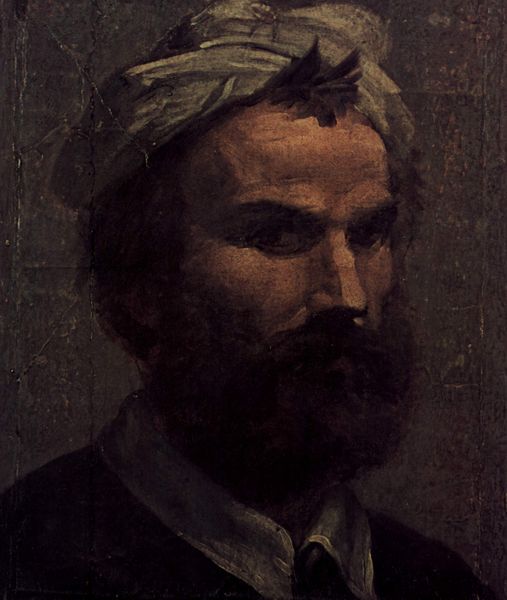
Domenico di Pace Beccafumi was an Italian Renaissance-Mannerist painter active predominantly in Siena. He is considered one of the last undiluted representatives of the Sienese school of painting.
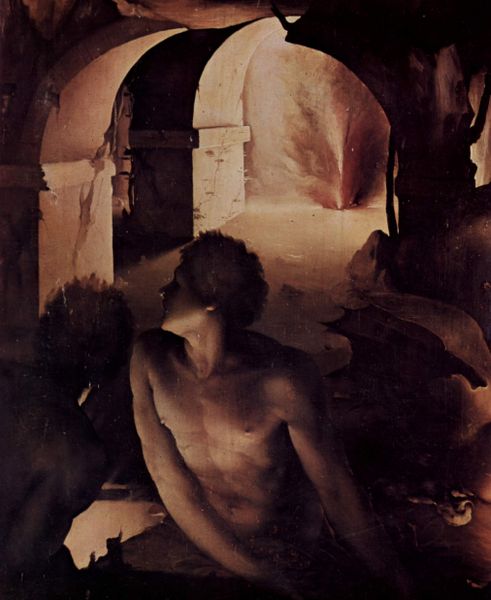
Domenico was born in Montaperti, near Siena, the son of Giacomo di Pace, a peasant who worked on the estate of Lorenzo Beccafumi. Seeing his talent for drawing, Lorenzo adopted him, and commended him to learn painting from Mecaro, a lesser Sienese artist. In 1509 he traveled to Rome, but soon returned to Siena, and while the Roman forays of two Sienese artists of roughly his generation (Il Sodoma and Peruzzi) had imbued them with elements of the Umbrian-Florentine Classical style, Beccafumi’s style remains, in striking ways, provincial. In Siena, he painted religious pieces for churches and of mythological decorations for private patrons, only mildly influenced by the gestured Mannerist trends dominating neighboring Florence. There are medieval eccentricities, sometimes phantasmagoric, superfluous emotional detail and a misty non-linear, often jagged quality to his drawings, with primal tonality to his coloration that separates him from the classic Roman masters.
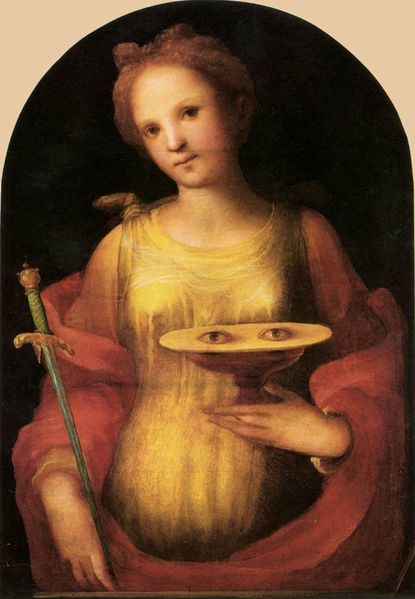
In addition to painting, he also directed the celebrated pavement of the cathedral of Siena from 1517-1544; a task that took over a century and a half. The pavement shows vast designs in commesso work—white marble, that is, engraved with the outlines of the subject in black, and having borders inlaid with rich patterns in many colours. From the year Beccafumi was engaged in continuing this pavement. He made very ingenious improvements in the technical processes employed, and laid down scenes from the stories of Ahab and Elijah, of Melchisedec, of Abraham and of Moses. He made a triumphal arch and an immense mechanical horse for the procession of the emperor Charles V on his entry into Siena.
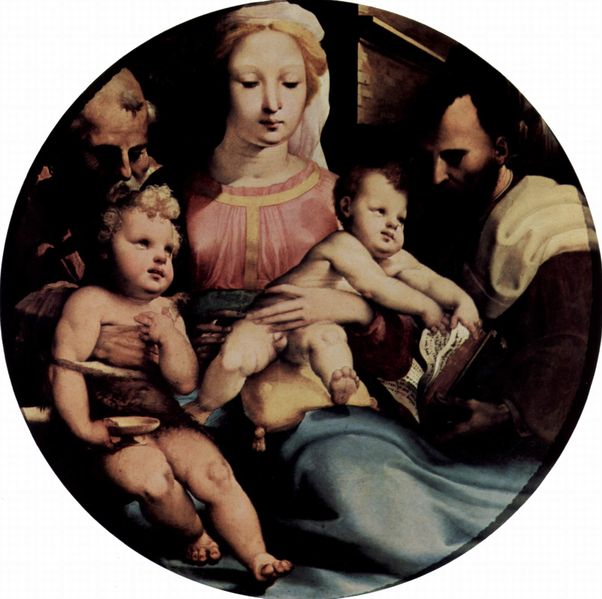
Compared to the equilibrated, geometric, and self-assured Florentine style, the Sienese style of painting, edges into a more irrational and emotionally-unbalanced world. Buildings are often transected, and perspectives awkward. The setting is often hallucinogenic; the colors, discordant. For example, in the Nativity (San Martino, Siena) hovering angels form an architectural hoop, figures enter from the shadows of a ruined arch. In his Annunciation, the Virgin resides in a world neither in day or dusk, she and the Angel Gabriel shine while the house is in shambles. In Christ in Limbo (Pinacoteca, Siena), an atypically represented topic, Christ sways in contraposto as he enters a netherworld of ruins and souls. S.J. Freedberg, compares his vibrant eccentric figures to those of the Florentine mannerist contemporary Rosso Fiorentino yet more “optical and fluid”. While all the elements of the expected religious scenes are here, it is like a play in which all the actors have taken atypical costumes, and forgotten some of their lines.
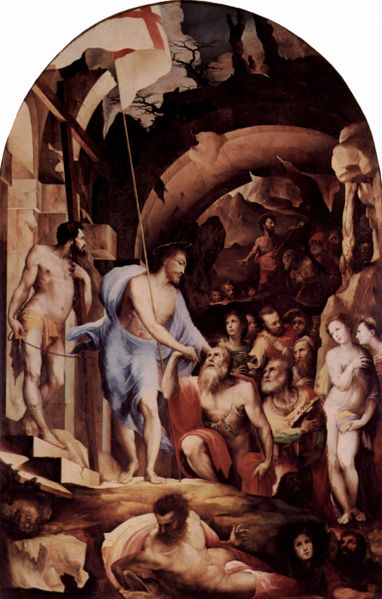
In Medieval Italy, Siena had been an artistic, economic, and political rival of Florence; but wars and natural disasters caused a decline by the 15th century. Beccafumi’s style is among the last in a line of Sienese artists, a medieval believer of miracles awaking in Renaissance reality.
